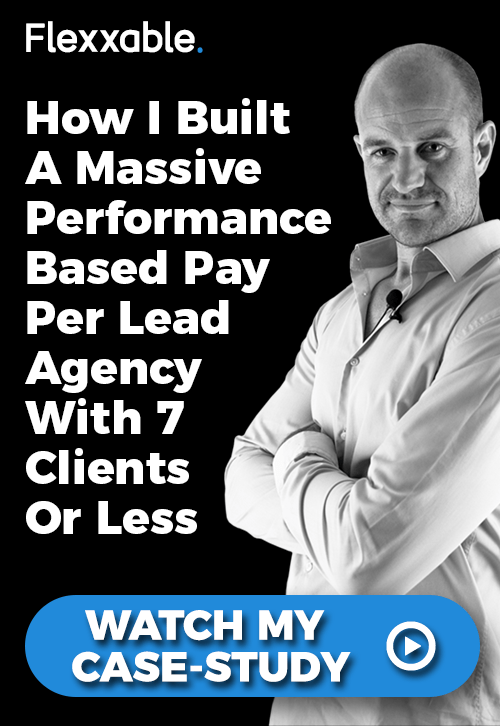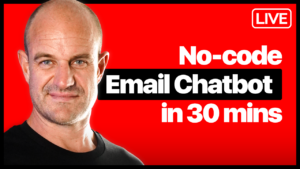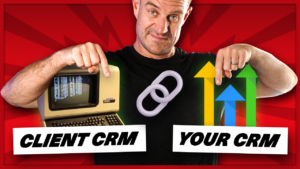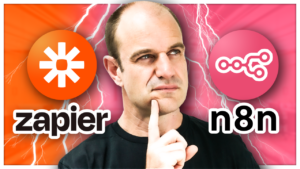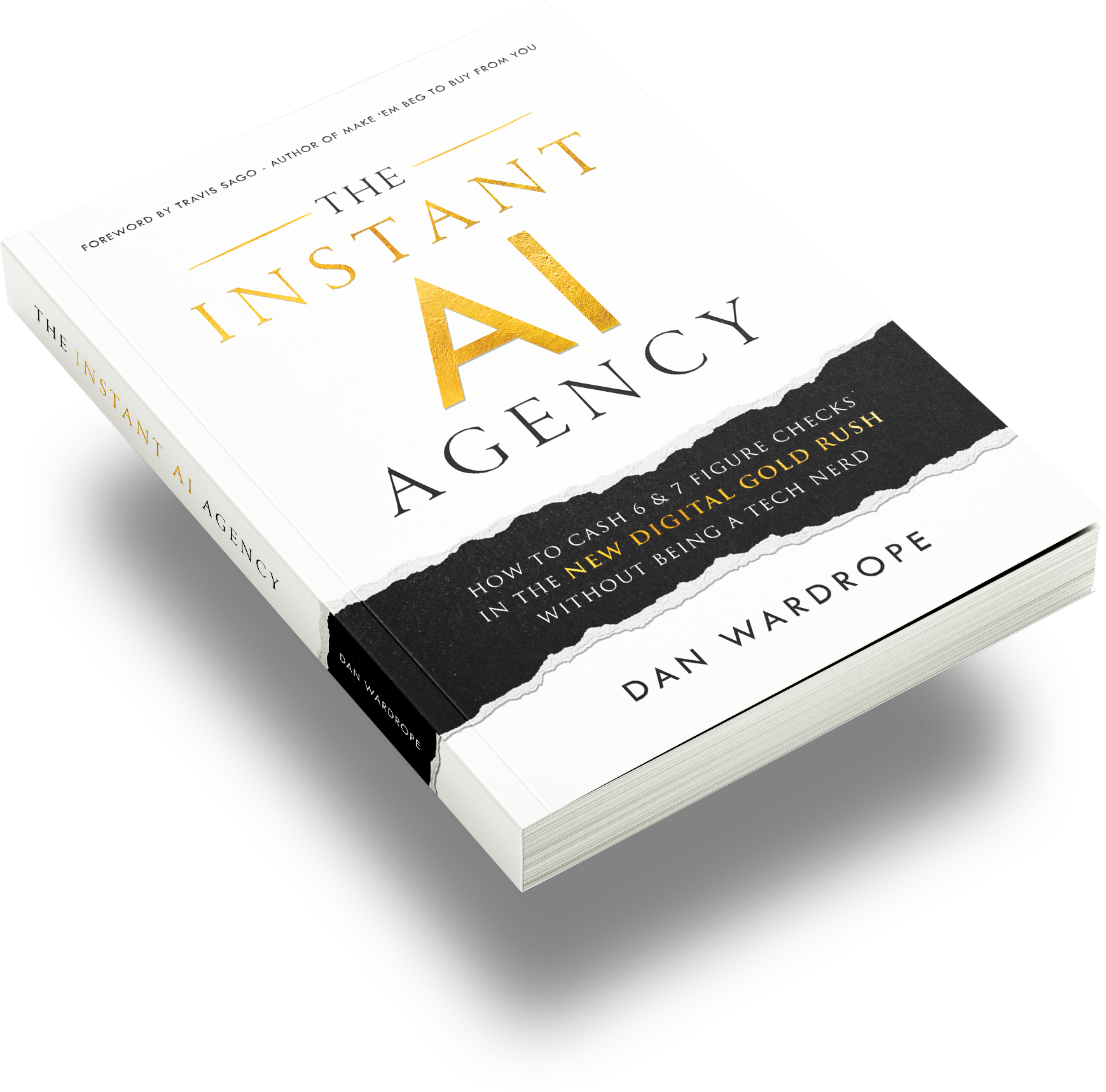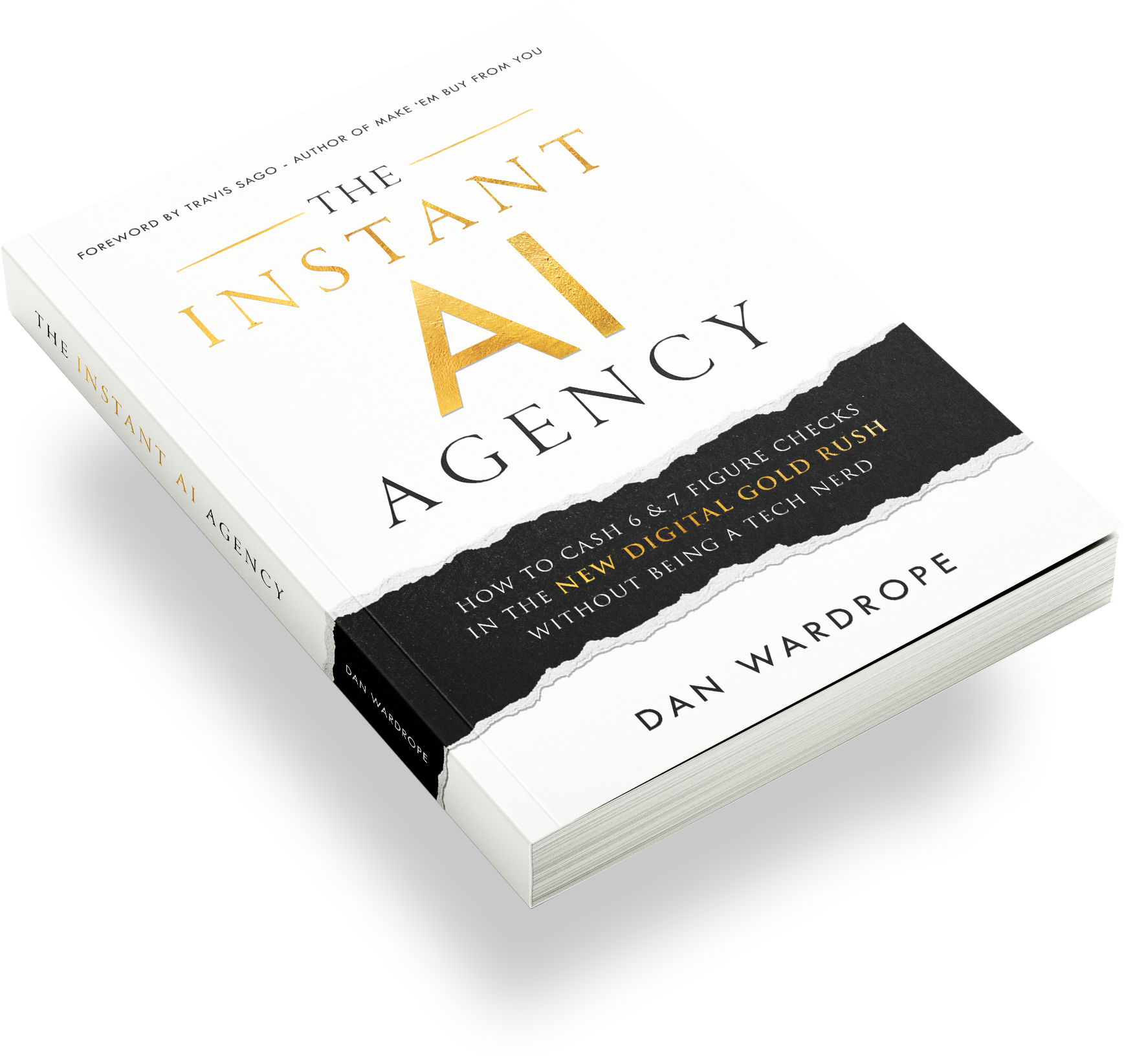Let me throw a quick scenario at you.
It’s a warm summer’s day, and the air smells of opportunity. To make the most of it, you decide to spend the afternoon fishing.
But when you reach your favourite grassy stretch of bank, you’re shocked to see the river’s dried up.
As you move to turn back, you see two deep holes further along the bank, both brimming with fresh water. By the holes, there are two signs.
SIGN ONE
In this water hole, you’ll find 1000 fish. 10 are big fish, 100 are medium fish, 890 are no bigger than a goldfish.
SIGN TWO
This water hole contains 100 big fish.
(I hope you can see where this is going).
You’re faced with a choice. Fish from Water Hole One and you’re pretty much guaranteed to catch lots of fish, very quickly.
Fishing from Water Hole Two will take a lot longer for far less, though every catch is definitely going to be a big fish.
You choose to fish from Water Hole One. After a couple of hours, you’ve got one big fish, which you sell for $200 down at the market, five medium fish, which you sell for $100 each, and about 100 tiny fish. Someone buys the lot for $100, to turn into kitty food. That’s $850 for a day’s work.
The next day you try Water Hole Two. In the same amount of time, you catch five big fish. That’s 101 less fish than yesterday. But when you sell these fish at the market, you take home a staggering $1000.
Make sense? It’s the same with generating leads for your clients.
Leads: Quality vs Quantity
When it comes to generating leads, some marketing agencies think that quantity is where it’s at.
On paper, it makes sense. A statement like “we generated 12,000 leads last week” is going to make bigger waves than “we generated 100 leads last week, but they were all really good”.
To make things even more confusing, those receiving the leads (aka, your clients), are also convinced that lead quantity is the answer. Again, on paper, the logic is sound. The more leads you have, the more likely you’ll make lots of conversions.
However, as with the fish, out of a big pile of mixed-quality leads only a tiny percentage will become customers. The client’s sales team are given the thankless task of chasing leads who have no intention of picking up the phone.
Meanwhile, the PPC marketer can just shrug their shoulders and say they delivered the number of leads the client asked for.
But, over the last couple of years, both B2C and B2B business owners have started to wise up. Now, 70% of B2B business owners would prefer quality leads to leads delivered in bulk.
So, What Exactly Is A “Quality” Lead?
A quality lead has:
- A clear intent to buy the product or service
- The cash and authority to do so
Simple, right? Trouble is, too many marketers think that just clicking on the ad and filling in a form signifies “clear intent to buy”.
Truth is, motivations for handing over personal details differ. The visitor may be genuinely interested in the offer. Or:
- They could have been window shopping
- The landing page promises a free gift in exchange for details
- The landing page form was pre-populated with their details
- They could be interested “when they get the money” or “when they have the time”
- They handed over fake info in exchange for the freebie mentioned in Point 2
- It’s a Sunday afternoon, and they’re bored
Despite these dubious motivations, once they’ve pressed “send”, all these visitors are now classified as “leads”. As you can see, very few of these leads hold the potential to become “customers”.
Luckily, technology has advanced enough to separate “quality” leads from the dross. I’ll get to that in just a bit.
Quality Leads And Cost Per Lead (CPL)
High-quality leads are inevitably going cost more than ones of a straight to the landing page/pre-populated form variety.
If your client’s offer is a high-ticket item or service, there’s going to be less of a market than for something popular, cheap and cheerful. PPC agencies and lead generators will have to spend time finding the right groups to target.
On top of that, the purchase process is going to be more extensive than a cheaper item that needs less commitment.
If you use a short copy ad and a landing page for a high-ticket item, be prepared for an influx of inferior leads.
Customers aren’t going to buy an expensive product or service lightly. You need a sales funnel that provides in-depth, preferably customised, informative content. Alongside that, you’ll need to list both the benefits and features and how the product or service solves the customer’s problem.
These extra stages in the lead generation process mean you’ll be paying more dollars per lead. Thankfully, there are a few ways to keep the costs from skyrocketing, and you can read about them here.
How To Consistently Generate High-Quality Leads
1. Make Sure You’re Targeting The Right People
Well, duh.
The more you know about your client’s buyers and what they need, the better your chances of delivering a highly-optimised sales funnel. In turn, this sales funnel will produce a larger volume of high-quality leads.
Alongside your own research, the simplest way to get the info you need is by directly asking your client.
Try and be specific with your questions. The more you learn about their ideal customer, the better the Facebook algorithm will work for you. For example, you could ask:
- What age demographic has converted well in the past?
- Are your customers predominantly male or female?
- What is your ideal customer’s average income?
- Is a majority of your target market a homeowner?
And so on.
Even if you’re familiar with the niche, ask your clients for as much info as you can. It’s better to be too eager than squander your budget on leads outside the criteria.
2. Add an Educative Part To Your Sales Funnel
Whether it’s through an advertorial or some long-form sales copy, potential leads will need plenty of information before they commit to the buying phase.
Whatever you decide, you need to leave your visitors with:
- More information than they’ve encountered before (making them better off)
- A guarantee that you’re a legitimate company and not a scam
- A bone-deep hunger for your product/service. For the length of your copy, the visitor can’t imagine their lives without it.
You’ll notice I left “hardcore sales pitch” out of the list. The best advertorials and long-form ads don’t look like they’re desperate to sell.
In fact, the best advertorials are consist of 70% original, informative content and only 30% product promotion. They act as a kind of “slow seduction” to pull in your reader, using every trick in the book to get them on side.
 Your advertorial needs to appeal to emotion, hitting the pain-points of your visitors until their nerves are nicely jangled. Then, just as the reader is about to throw themselves a pity-party of one, your advertorial moves smoothly over to the only possible solution to their problem: your product/service.
Your advertorial needs to appeal to emotion, hitting the pain-points of your visitors until their nerves are nicely jangled. Then, just as the reader is about to throw themselves a pity-party of one, your advertorial moves smoothly over to the only possible solution to their problem: your product/service.
But don’t start throwing out “special offers” and “slashed prices” just yet. That’s like agreeing that the visitor has a massive head-wound, waggling your finger around in the gore, then sticking a plaster over it and telling them to “buck up”.
Ease them to your point of view (aka buying this expensive solution) by listing the benefits, not the features. Pointing out the benefits can make even the most boring service look sexy as hell, and is much more likely to resonate with readers.
If you’re having a hard time thinking of the benefits of your product/service, here’s a neat formula I picked up from the marketing magician, Dave Dee:
This course teaches you to speak German fluently in three months [FEATURE] which is useful because [SEGUE] you’ll look like a sophisticated jet-setter in Berlin, whereas Bob and Sally will be left fumbling with their guide book, looking like idiots. [BENEFIT].
If the visitor reads the advertorial and hands over their details after the CTA, you can be sure they’re a high-quality lead.
3. Validate Your Leads
Remember when I said that technology has come far enough to separate quality leads from the dross?
Lead validation helps to segregate false leads from the real ones generated from your advertising campaigns.
Fake leads include:
- Spam form submissions
- Fake emails and telephone numbers
There are no definitive ways to keep someone from handing over false information. However, there are some tools available that prevent it from happening too often and too obviously.
One of my favourite tools is Loqate. Using data verification and geocoding technology, Loqate prevents visitors from giving fake telephone numbers and addresses.
For telephone numbers, Loqate keeps an extensive database of numbers within several countries. If the number provided doesn’t match any in the database, Loqate won’t let the visitor proceed with the lead generation form.
Likewise, Loqate comes down on false addresses by asking for the visitor’s zip or postcode. As the visitor types, Loqate lists all the addresses in that area. The user selects the correct address, and Loqate populates the field automatically.
Using tools like Loqate, it won’t be long before you see a dramatic improvement in lead quality and conversion rate. Well worth the extra cost!
4. Segment Your Leads
With quiz software like LeadsHook, segmenting leads is a piece of cake.
As I’ve mentioned in other posts, visitors will generally see a long sales funnel through if there’s an interactive element.
A quiz or survey that asks questions beyond “what is your name” and “what is your address” also makes the prospect feel like their needs are being heard. Even if your quiz only has two outcomes (We Can Help You/We Can’t Help You), visitors think the response has been tailored to suit their specific needs. No one likes to feel like a string of data, and the human touch goes a long way.
If your client is looking for the type of lead that lives in X area, with X amount of money to spend, who can pay in X amount of time, etc., etc., then make sure your quiz asks the right questions to mine that information.
If the visitor is a “match” for your client, you can send them to thank you page A. This page is for “good” leads, containing information about a future follow-up call or email.
Thank you page B is for those who don’t match your client’s requirements. This page can use a short “Sorry We Can’t Help You” message, and offer some alternative services if you like.
Quality OR Quantity? How About Quality AND Quantity?
Now I’ve told you how to generate high-quality leads, let’s go back to the fish (remember the fish?).
When you took your mixed-bag of fish to the market, customers paid $200 for a big fish, $100 for a medium fish, then someone paid $100 for all the little fish to make cat food.
Makes sense, right? Of course, customers are going to pay more for the big fish, simply because it’s the better fish and you get more from it.
It’s exactly the same for your clients. A client SHOULD pay more for high-quality leads, simply because they’re more valuable.
For anyone new to my blog, FlexxDigital is a cost-per-lead agency. This means we charge clients an agreed price for each we lead we supply them, rather than work off retainer contracts.
There’s a huge benefit that comes from working on your own terms (as well as not being roped into fan page design, SEO and everything else). On a retainer, you’re working for a fixed fee. It doesn’t matter if you’re generating the best leads the world has ever seen… you won’t get any extra.
On the cost-per-lead model, however, you can insist on being paid what you deserve. The higher the lead quality, the more the client has to pay.
That said, creaming the profit for high-quality leads is more complicated than it sounds.
In an ideal world, every lead would be a “big fish” that brings in piles of cash. However, in the real world, the prospective lead pool is more like Fishing Hole One (the mixed bag) than Fishing Hole Two (only the best). So, if you only sell the big fish, or the highest-quality leads, and throw the rest away, you’ll be seeing a serious impact on your overall profit.
It’s Not Quality OR Quantity, It’s The Best Of Both
No matter how well you’ve optimised your sales funnel, you’re going to get some leads that fall outside your client’s “most valuable” criteria.
With some ingenuity, the lesser-quality leads you bring in don’t have to be “useless” or a “waste of money”.
To make a profit out of both types of lead, consider these three golden strategies:
1. Build A Lead Generation Website
I’ve written about lead generation websites before, so I’ll only give you a quick recap.
A lead generation website is similar to a landing page, but it can cater to multiple clients within the same niche.
As you’re driving paid traffic over to your lead generation website, it’s essential that you try and convert as many visitors to leads as possible. The best lead generation websites have five features:
- A strong call-to-action (CTA)
- A conversion form
- Informative content
- A clear value message
- Hidden analytics to measure leads and click-backs.
The great thing about lead generation websites is that all your leads – regardless of who they’re for or their quality – are sent to the same place. This makes sorting out the best from the not-so-great far easier than managing several landing pages.
2. Use Your Website To Segment The Leads By Quality
Earlier, I said it was possible to separate the wheat of leads from the chaff using quiz software like LeadsHook.
Take things one step further, and use your quiz to separate the leads into distinct bundles for multiple clients.
I have a student in the Netherlands who’s just got into the used car sales niche. It’s a huge market, so I’ll use him as an example.
Client A wants the highest quality leads. They want leads who are highly motivated to sell their cars and want to sell them RIGHT NOW. Client A is prepared to pay $30 for leads that fit this criterion.
Out of the 100 leads my student produces, the quiz results suggest that 50 are a match.
If he sends all 100 to Client A, Client A would be within their rights to complain about the lead quality.
Client B, on the other hand, is willing to take leads that aren’t ready to sell just yet but can enter a nurture sequence. He offers my student $10 per lead, and commission for any leads that convert.
At some point, my student may get Client C. Client C wants leads who want to sell their car and buy a replacement. As my student already has a lead gen website and a funnel, he won’t need to make too many changes to accommodate Client C’s criteria.
Lead segmentation like this can go on for as many clients as you choose to take on in that niche.
3. Scale, Scale and Scale
And I’m not talking about the fish.
Once you’ve perfected getting leads for Client A and selling the leftovers to Client B, you can start revising your strategy to get high-quality leads for Client A and Client B.
The leftover leads? Introducing Client C who, like Client B beforehand, will buy the lesser-quality leads for a cheaper rate plus commission.
Then rinse and repeat.
This kind of scaling means you could go from producing 100 leads a week to 500 or even 1000.
All of the leads will have gone through your sales funnel and validation systems, so all will be high-quality depending on which client they’re going to. And if you take on clients who are willing to buy the leads left over, you’ll always be in the black.
Or, if your lead generation website is profitable enough, you may find that a client wants to buy you out and take leads away from the competition.
Either way, it’s a win-win for you. You’ll definitely be making money!
Conclusion
So, in answer, quality is what your clients are looking for. Though it’s tempting to inundate a client with leads, they’ll have no way of knowing which leads are the most valuable. This will send their sales team on a wild-goose chase trying to close non-qualified leads, opening you up for negative feedback.
However, quantity isn’t a bad thing. Separate the valuable leads from the less so, and send them to your first client as a matter of priority. Then take the rest and find a client who’ll be happy to buy in bulk. No accumulated data will go to waste!
If you’re looking for some more advice on how to generate top-quality leads, move away from retainer contracts and attract high-paying clients, watch my FREE case study now.
Learn how I:
- Moved away from local businesses
- Started working with national B2C companies
- Land high-ticket clients with deep pockets
- Found the verticals I’ve worked in
- Generate leads of the highest quality.
A world of lead gen is yours at the click of a button. Just select “Watch Now”.

